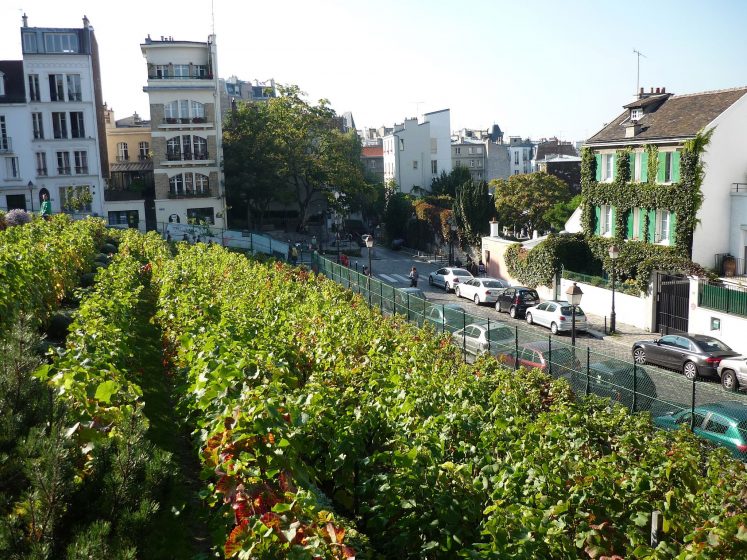The Best Strategy To Use For City Blooming
The Best Strategy To Use For City Blooming
Blog Article
The Main Principles Of City Blooming
Table of ContentsThe City Blooming StatementsThe Definitive Guide for City BloomingSome Known Facts About City Blooming.The Buzz on City BloomingAn Unbiased View of City Blooming
Intrigued in expanding food available in the City of Chicago? Considering beginning a neighborhood yard? Changes to the Chicago Zoning Statute allow farming uses like area gardens and city farms in many components of the city. Below is a list of often asked concerns relating to the guidelines and policies that farmers ought to consider when intending a city farming project.
The zoning change does not customize any kind of other codes taking care of composting, building permits, acquiring or leasing City had residential property, company licenses or ecological contamination. There are existing codes that manage these issues and they continue to be completely impact and may apply to your job. Community yards are typically had or taken care of by public entities, civic companies or community-based organizations and preserved by volunteers.
Urban ranches expand food that is intended to be marketed, either on a nonprofit or for-profit basis. Due to their industrial objective, city ranches require a business certificate.
The Ultimate Guide To City Blooming
The quantity of compost product can not surpass 25 cubic yards at any kind of offered time according to the criteria in 7-28-715 of the City's Municipal Code. Since the dirt at many new yard sites needs modifying, compost, dirt, timber chips, or other materials can be obtained to build or improve the growing space.

If a structure authorization is needed after that the hoophouse will be taken into consideration an accessory building. You can figure out even more regarding the building license demands by contacting the Division of Structures. The 25,000-square-foot dimension limitation is intended to avoid a single community yard from dominating a provided block or diminishing the block's existing residential or business character.
The limitation does not apply to yards located in Public Open Space (POS) areas. Can there be greater than one community yard that is 25,000 square feet on a solitary block? Yes. The size restriction uses to private gardens, not to specific blocks. No. Fence is not called for, nonetheless, yards that have big parking lot might be called for to set up fence or various other landscape design functions.
More About City Blooming
B1 & B2 areas require that all commercial usage activities be performed inside. sustainability Is fencing required for urban ranches? Fencings might be needed, along with landscape design and screening, for particular car park locations and outdoor work or storage locations depending on location and the particular activity taking location.
Urban farms require building authorizations and zoning authorizations prior to building and construction (fruit and vegtables). Other forms of city testimonial might be needed depending on certain frameworks, activities, dimension, landscape design, licensing, public health and stormwater management issues.
The Division of Business Matters and Customer Protection can help establish the certain type of business certificate that's required. Off road car parking is required for most industrial tasks in Chicago. The called for number of vehicle parking rooms is based on the number of employees working on site and not the square video footage of the growing room.
City Blooming - Truths

A metropolitan farm can offer garden compost material created on site, however, the operation needs to conform with the regulations in 7-28-715 of the Chicago Municipal Code. Aquaponic systems are permitted inside on urban ranches in many zoning districts.
Up to five hives or nests of honey bees might be maintained as an accessory use. Beekeepers must sign up with the Illinois Division of Agriculture. For additional information about the proposed zoning change you may call the Division of Housing and Economic Development, Bureau of Planning and Zoning at 312.744.8563.
Farming in cities and urban locations An urban farm in Chicago. Urban agriculture refers to numerous methods of cultivating. https://myanimelist.net/profile/cityblooming, processing, and dispersing food in urban locations. The term additionally uses to the location activities of animal husbandry, tank farming, beekeeping, and gardening in a city context. Urban farming is identified from peri-urban farming, which takes area in backwoods beside residential areas.
A Biased View of City Blooming
, who look for to develop social networks founded on a common ethos of nature and area holism. These networks can create by means of official institutional support, coming to be integrated right into regional community planning as a "change town" movement for sustainable city growth.
The much more straight access to fresh vegetable, fruit, and meat products that might be understood via city agriculture can enhance food security and food safety while decreasing food miles, bring about reduced greenhouse gas exhausts, consequently adding to climate modification mitigation. Several of the very first proof of urban agriculture originates from Mesopotamia.
Report this page